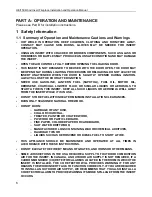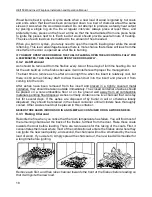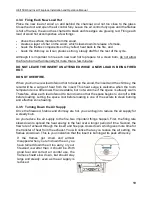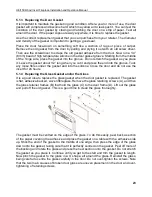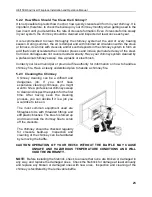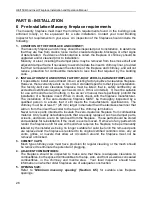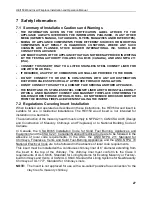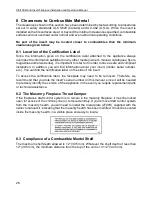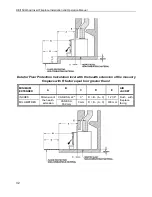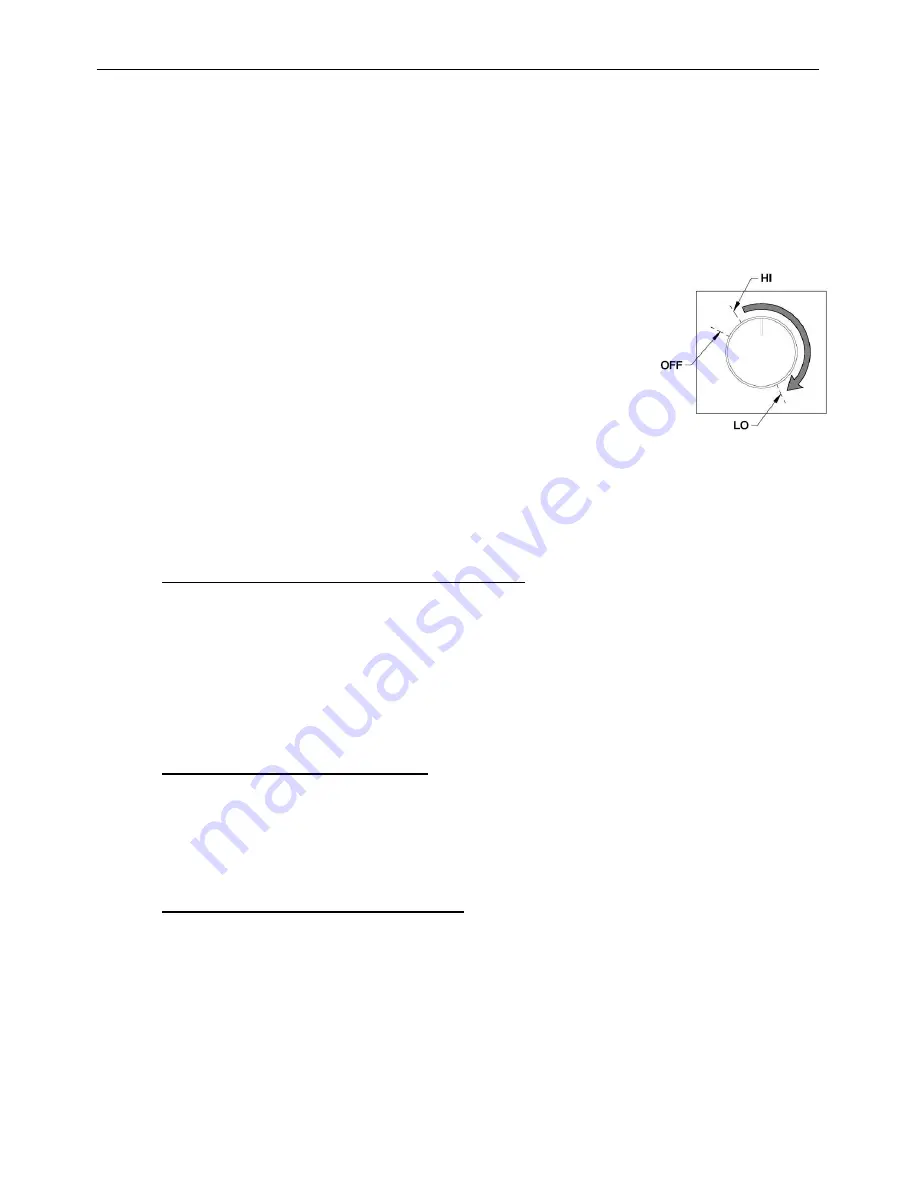
HEI150 Wood Insert Fireplace Installation and Operation Manual
20
4.4 Blower Operation
Allow the insert to reach operating temperature (approximately one hour), before turning on
the blower, since increased airflow from the blower will remove heat and affect the start-up
combustion efficiency.
NOTE: ENSURE THE BLOWER CORD IS NOT IN CONTACT WITH ANY SURFACE OF THE
INSERT TO PREVENT ELECTRICAL SHOCK OR FIRE DAMAGE. DO NOT RUN CORD
BENEATH THE INSERT.
Turn the blower ON or OFF with the rheostat located on the left side
of the blower assembly below the bottom louvre. The switch
settings are Off, High (HI) and adjustable down to Low (LO).
4.4.1 Building Different Fires for Different Needs
Using the air control is not the only way to match the insert’s heat output to the heat demand.
Your house will need far less heat in October than in January to be kept at a comfortable
temperature. If you fill the firebox full in fall weather, you will either overheat the space or
turn the insert down so much that the fire will be smoky and inefficient. Here are some
suggestions for building fires to match different heat demand.
4.4.1.1 Small Fires to Take the Chill Off the House
To build a small fire that will produce a low heat output, use small pieces of firewood and
load them crisscross in the firebox. The pieces should be only 3” to 4” in diameter. After
raking the coals, you can lay two pieces parallel to each other corner to corner in the firebox
and lay two more across them in the other direction. Open the air control fully and only
reduce the air after the wood is fully flaming. This kind of fire is good for mild weather when
you are around to tend the insert and should provide enough heat for four hours or more.
Small fires like this are a good time to use softer wood species so there will be less chance
of overheating the house.
4.4.1.2 Long Lasting Low Output Fires
Sometimes you will want to build a fire to last up to eight hours, but don’t need intense heat.
In this case use soft wood species and place the logs compactly in the firebox so the pieces
are packed tightly together. You will need to fire the load hot for long enough to fully char
the log surfaces before you can turn the air down. Make sure the fire is flaming brightly
before leaving the fire to burn.
4.4.1.3 High Output Fires for Cold Weather
When the heat demand is high during cold weather, you’ll need a fire that burns steadily and
brightly. This is the time to use larger pieces of hardwood fuel if you have it. Put the biggest
pieces at the back of the firebox and place the rest of the pieces compactly. A densely built
fire like this will produce the longest burn your insert is capable of.
You will need to be cautious when building fires like this because if the air is turned down
too much, the fire could smoulder. Make sure the wood is flaming brightly before leaving the
fire to burn.

